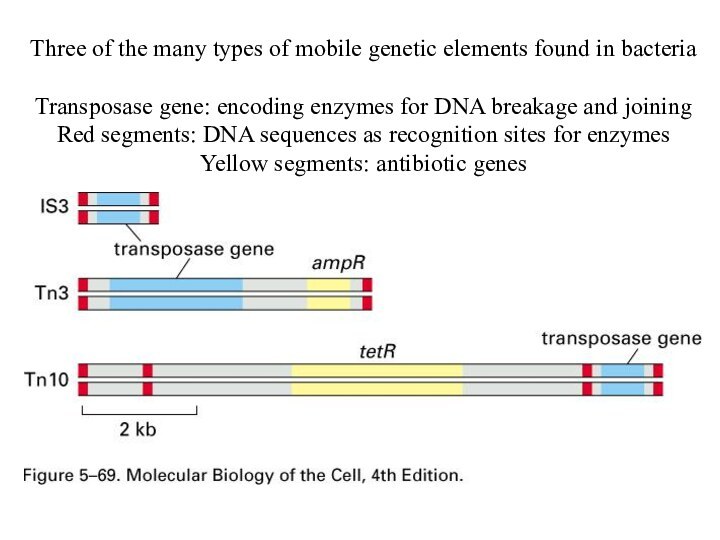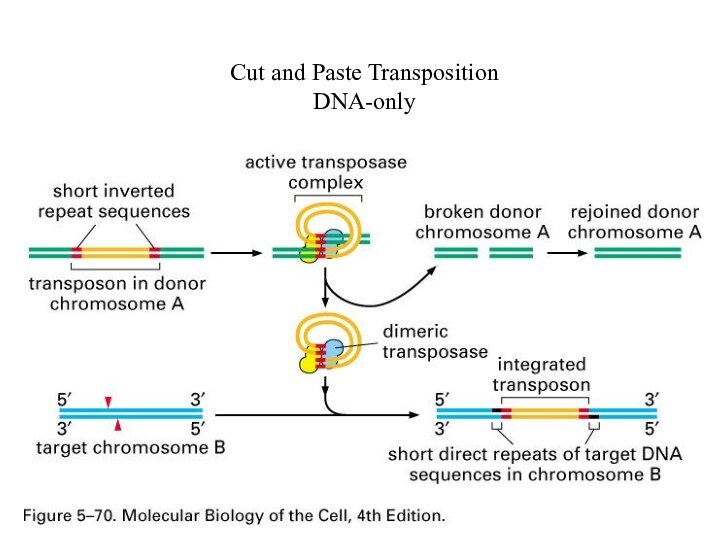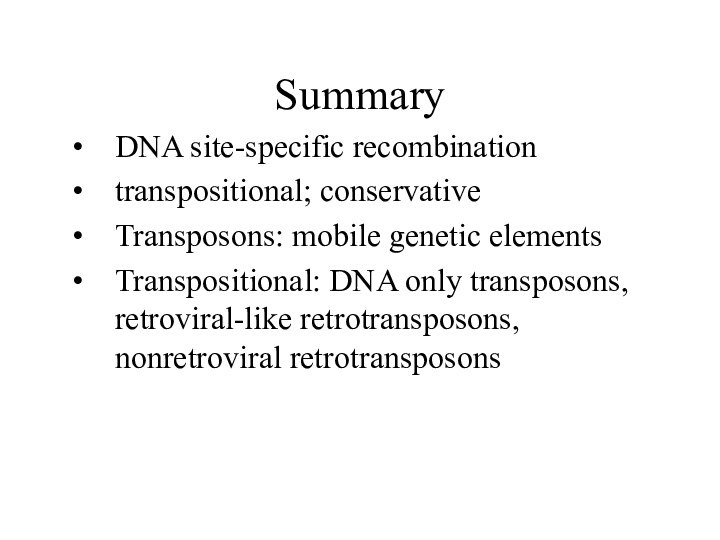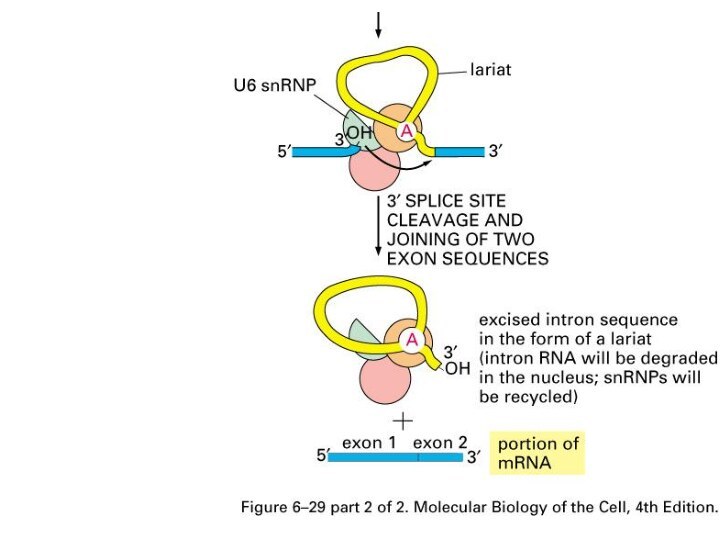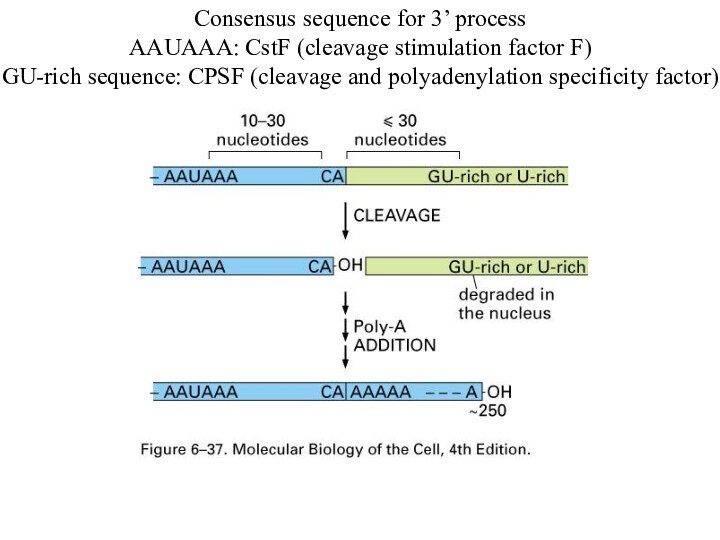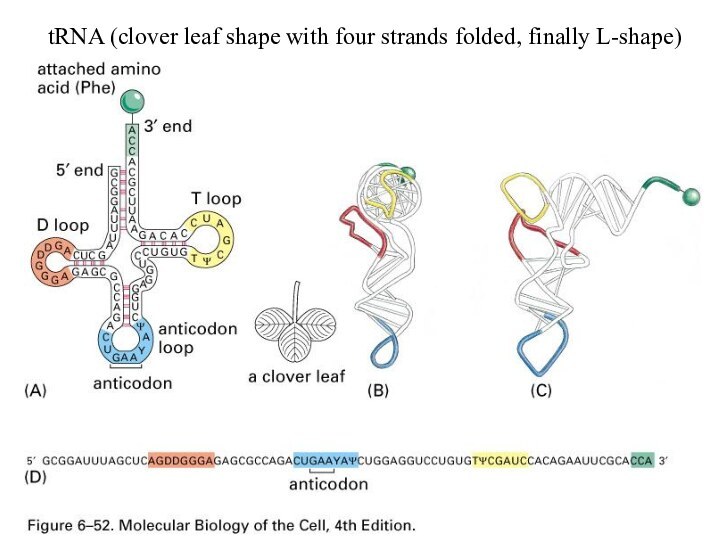elements found in bacteria
Transposase gene: encoding enzymes for DNA
breakage and joiningRed segments: DNA sequences as recognition sites for enzymes
Yellow segments: antibiotic genes
FindSlide.org - это сайт презентаций, докладов, шаблонов в формате PowerPoint.
Email: Нажмите что бы посмотреть

